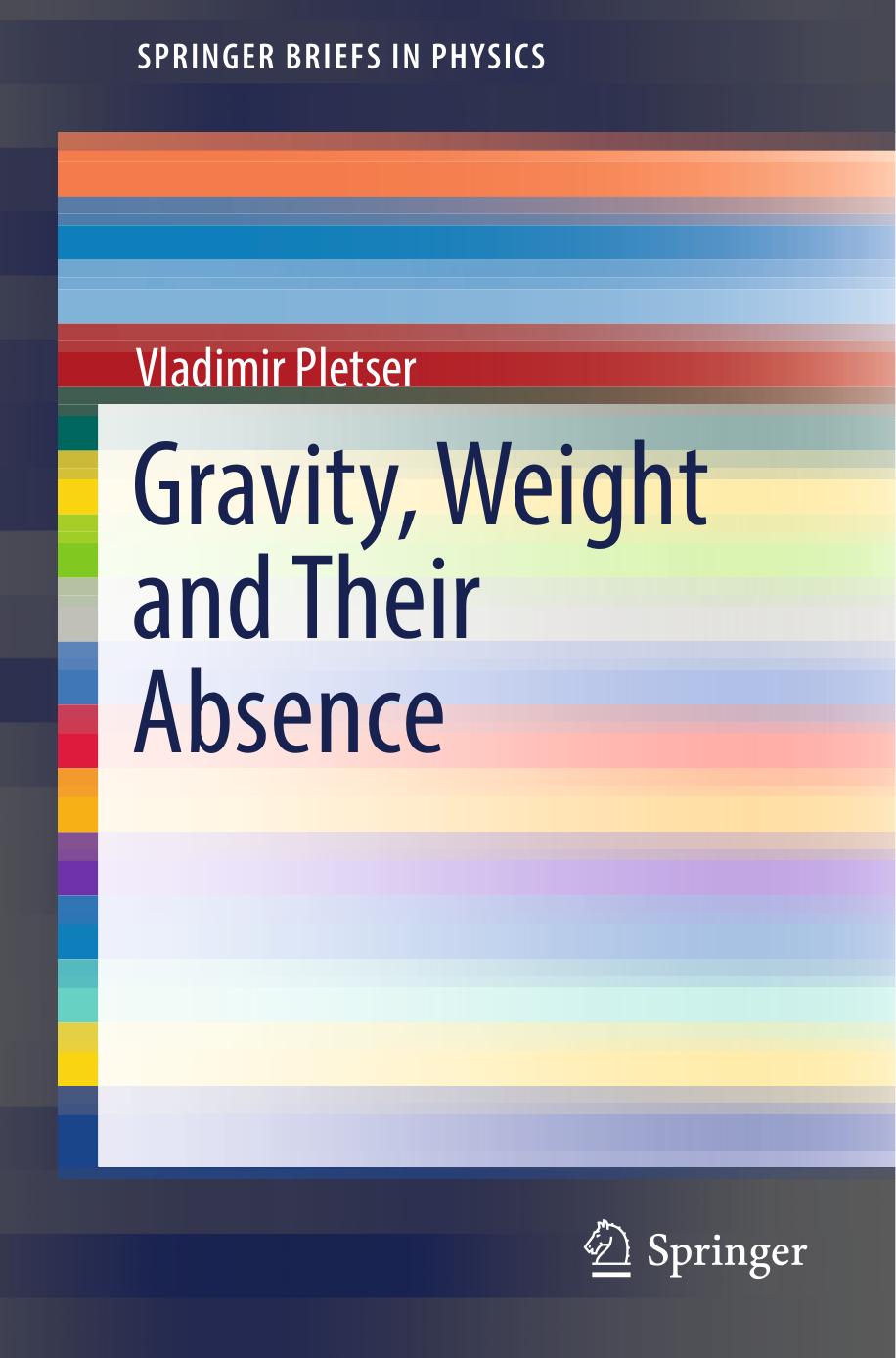Gravity, Weight and Their Absence by Vladimir Pletser

Author:Vladimir Pletser
Language: eng
Format: epub, pdf
Publisher: Springer Singapore, Singapore
2 Microgravity
Practically, perfect weightlessness is impossible to realize in a free-falling vehicle. The reasons for this are simple in their principle but complex to evaluate. Simply said, there always remain some little parasitic forces creating residual accelerations. These parasitic forces can be classified in two categories: the non-gravitational forces “external” to the vehicle, whose resultant is not null; and the “internal” forces for which inertia forces do not compensate exactly gravity. Appendix 8 presents some of these perturbing forces.
The terms of weightlessness, null gravity (weightiness) or zero gravity (weightiness) designate an idealized state that cannot be obtained. One talks about reduced gravity (weightiness) or micro-gravity (weightiness), to be taken in its etymological sense of the prefix micro- (from Greek mikros, small) and not in its usual technical sense, millionth. As already indicated previously, the language abuse consisting of replacing gravity (weightiness) by gravity unfortunately is widespread. One often finds the terms of null gravity, zero gravity, reduced gravity and microgravity. This last term is now consecrated to designate micro-gravity (weightiness). To follow the usage common to the domain specialists, we will from now onwards commit the language abuse of talking about gravity (and its derivative, microgravity and hypergravity) while it is gravity (weightiness) that we really mean.
Note as well that microgravity does not refer to the gravitational attraction of another body than Earth, having a small mass with respect to Earth’s, but close to the location considered in microgravity, e.g. the mass of an orbital vehicle in which an experiment is conducted.
One specifies the “quality” of the obtained microgravity by the magnitude of the residual acceleration, most commonly expressed as a fraction of gw, the average acceleration of gravity (weightiness) on Earth (the subscript w in gw will be dropped from now onwards). In the next section, we describe the methods used to create microgravity. To fix orders of magnitude, one obtains residual accelerations in the order of 10−6 g (a millionth of the gravity acceleration) in drop towers and from 10−2 to 10−4 g (a hundredth to a ten thousandth of g) in the International Space Station (ISS) in orbit between 400 and 450 km altitude.
Other important factors quantify the “quality” of obtained microgravity.
Firstly, a parameter that intervenes as soon as one talks about accelerations is the frequency with which residual accelerations are applied i.e. in case the acceleration is not constant and intermittent only, the frequency is the number of times the acceleration changes per second. One specifies the acceptable level of residual acceleration in fraction of g in function of frequency ranges to which the observed phenomena are sensitive. One tries as far as possible to eliminate too important residual accelerations by isolating experiment equipment. Generally speaking, most of experiments are less sensitive to high frequencies (above 10 Hz) than to low frequencies (less than 1 Hz).
Another parameter characterizing microgravity is the duration during which the state of quasi-weightlessness is established; it depends on the chosen vehicle and on the environment in which it falls freely. Duration goes from a few seconds in drop towers to several years on board a space station.
Download
Gravity, Weight and Their Absence by Vladimir Pletser.pdf
This site does not store any files on its server. We only index and link to content provided by other sites. Please contact the content providers to delete copyright contents if any and email us, we'll remove relevant links or contents immediately.
| Automotive | Engineering |
| Transportation |
Whiskies Galore by Ian Buxton(41935)
Introduction to Aircraft Design (Cambridge Aerospace Series) by John P. Fielding(33085)
Small Unmanned Fixed-wing Aircraft Design by Andrew J. Keane Andras Sobester James P. Scanlan & András Sóbester & James P. Scanlan(32763)
Craft Beer for the Homebrewer by Michael Agnew(18194)
Turbulence by E. J. Noyes(7977)
The Complete Stick Figure Physics Tutorials by Allen Sarah(7334)
Kaplan MCAT General Chemistry Review by Kaplan(6897)
The Thirst by Nesbo Jo(6877)
Bad Blood by John Carreyrou(6581)
Modelling of Convective Heat and Mass Transfer in Rotating Flows by Igor V. Shevchuk(6406)
Learning SQL by Alan Beaulieu(6235)
Weapons of Math Destruction by Cathy O'Neil(6206)
Man-made Catastrophes and Risk Information Concealment by Dmitry Chernov & Didier Sornette(5951)
Digital Minimalism by Cal Newport;(5699)
Life 3.0: Being Human in the Age of Artificial Intelligence by Tegmark Max(5506)
iGen by Jean M. Twenge(5384)
Secrets of Antigravity Propulsion: Tesla, UFOs, and Classified Aerospace Technology by Ph.D. Paul A. Laviolette(5330)
Design of Trajectory Optimization Approach for Space Maneuver Vehicle Skip Entry Problems by Runqi Chai & Al Savvaris & Antonios Tsourdos & Senchun Chai(5036)
Pale Blue Dot by Carl Sagan(4949)
